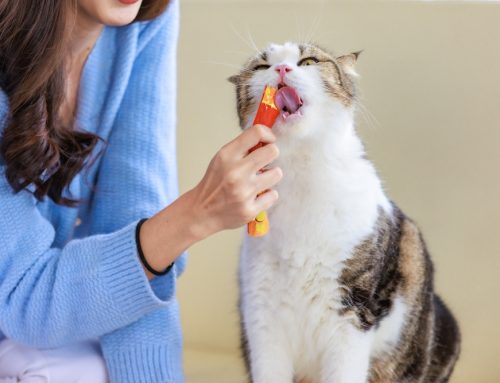Separation anxiety is a challenging condition that can affect the pet’s quality of life and strain the pet-owner relationship. Owners of anxious pets may feel limited—or controlled—by their pet’s behavior and emotional needs, and become resentful.
Separation anxiety doesn’t have to rule your life. With a proper diagnosis at Neighborhood Veterinary Centers of Calder and a multi-step treatment plan, your pet can successfully learn how to cope in your absence.
More than a whimper—defining separation anxiety in pets
Separation anxiety is a condition in which dogs—and, less often, cats—experience intense emotional distress when they are left alone or when a particular person is absent. While the average healthy pet may experience temporary sadness at their owner’s departure, separation anxiety pets have extreme emotional and physical reactions, similar to a panic attack. Anxious pets may become destructive, attempt to escape, or cause self-inflicted harm. Left untreated, separation anxiety can escalate and lead to serious injury, property damage, pet loss, or death.
What causes separation anxiety in pets?
Pets with separation anxiety develop abnormally strong emotional attachments to their owners or caregivers and can be be influenced by several factors, including:
- Poor socialization — Undersocialized pets often lack confidence and do not feel safe without their owner nearby. These pets are generally more fearful of change and lack optimism.
- Traumatic history — Previously neglected, abandoned, and abused pets are more likely to form an intense attachment to their owners.
- Abrupt lifestyle change — Sudden changes in your pet’s living arrangements (e.g., relocation, loss or addition of a family member, new work schedule) can trigger separation anxiety.
- Age — Puppies and kittens rely on their caregivers for safety and protection, while senior pets may become anxious as their senses decline and seek more reassurance from their owner.
What are separation anxiety signs in pets?

Separation anxiety signs closely resemble misbehavior and lack of training, so many pets go undiagnosed. Unfortunately, the pet’s condition can worsen if harsh training is used to “correct” their behavior, leading to generalized anxiety disorder. If your pet experiences a sudden or worsening behavior change, always consult your veterinarian before pursuing training or other corrective measures.
Separation anxiety signs are generally displayed before, during, and after the bonded person’s absence and may include:
- Panting
- Clingy behavior
- Depression
- Agitation or aggression
- Drooling
- Vocalizing
- Chewing
- Attempted escape
- House soiling
- Repetitive or compulsive behaviors (e.g., pacing, over grooming)
- Digging—especially around exits such as doors and windows
Pets with separation anxiety may greet their bonded person overly enthusiastically, including jumping, licking, vocalizing, and attention-seeking. Owners who notice any change in their pet’s behavior should schedule an appointment at Neighborhood Veterinary Centers of Calder.
How is separation anxiety diagnosed in pets?
Your pet’s veterinarian will begin their assessment with a thorough history, which includes your description of your pet’s abnormal behavior and—most importantly—when the behavior takes place. If the anxious behavior occurs while you—or your pet’s bonded person—are with the pet, separation anxiety is unlikely and a behavior problem suspected. While pets may be nervous before their bonded person departs, they are not likely to show anxiety or be destructive in that person’s presence.
Next, the veterinarian will perform a comprehensive examination to look for physical causes for your pet’s anxiety, such as sensory changes (i.e., vision or hearing loss), impaired cognition, or pain.
Because testing is not possible, separation anxiety is considered a diagnosis of exclusion (i.e., once all other possible causes are eliminated, the pet’s distress and behavior are declared separation anxiety).
Can separation anxiety in pets be cured?
Separation anxiety is an incurable condition that does not go away on its own. However, signs and suffering can be successfully managed with dedicated and persistent veterinary and at-home care.
Treatment protocols vary depending on the pet’s signs and severity. The earlier your pet’s condition is diagnosed, the less intensive the treatment regimen required. However, separation anxiety management is always a lengthy process as pets learn new behavior patterns and new responses to old triggers.
How is separation anxiety treated in pets?
Separation anxiety management requires a multi-modal approach that includes:
- Medication — Pharmaceutical therapy is the fastest way to relieve pet anxiety and help pets learn new behaviors. Medications may include anti-anxiety or sedative medications.
- Behavior modification — This includes gradually establishing positive associations with being left alone to create new emotional responses. One-on-one work with a veterinary behaviorist may be required.
- Environmental management — Pet owners may unknowingly contribute to their pet’s anxiety by greeting them at length or dramatically when they leave or return home. Environmental management includes calm departures and arrivals to avoid reinforcing your pet’s undesirable behavior, as well as creating a safe and secure environment for your pet to rest while you are away.
Can separation anxiety be prevented?
Separation anxiety is generally easier to prevent than treat, but the problem can arise at any time for a number of reasons, and socialization and training do not guarantee lifelong success. The best ways to minimize your pet’s separation anxiety risk include:
- Introducing “alone time” as a positive experience when they are young
- Crate training your pet
- Building your pet’s confidence and independence with positive socialization opportunities
- Providing daily exercise and mental stimulation
- Staying calm and neutral during departures and arrivals
Does your pet struggle with being alone? Do they try to block the door when you attempt to leave or “redecorate” while you’re away? They may be experiencing separation anxiety. Don’t wait—schedule an appointment at your trusted southeast Texas veterinary practice, Neighborhood Veterinary Centers of Calder.






Leave A Comment